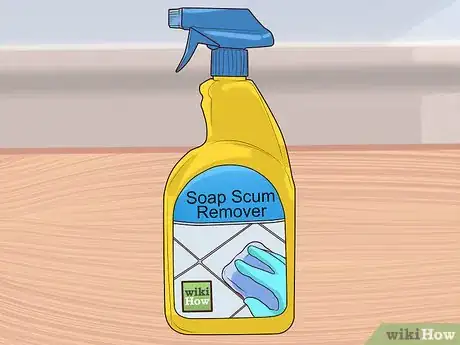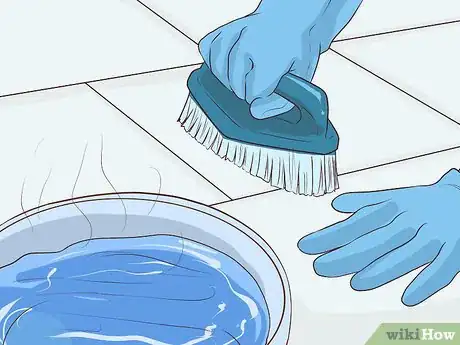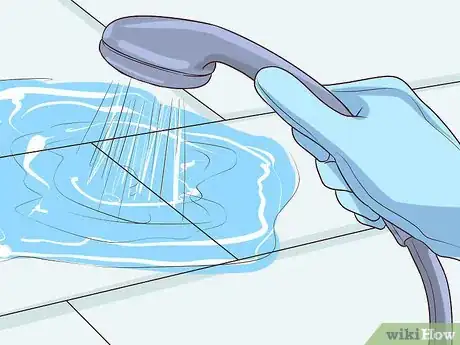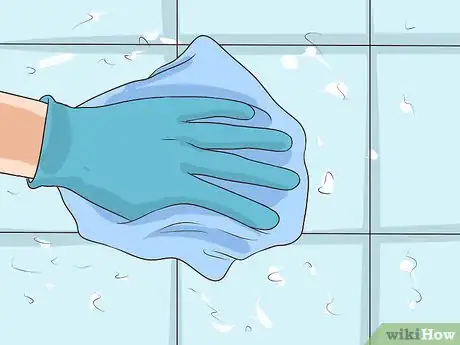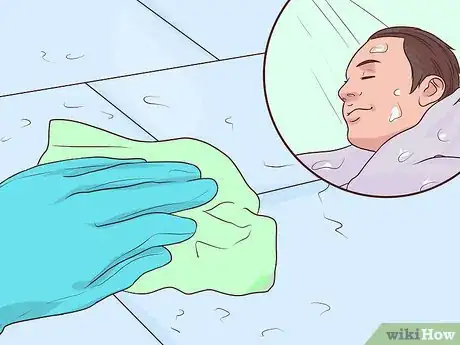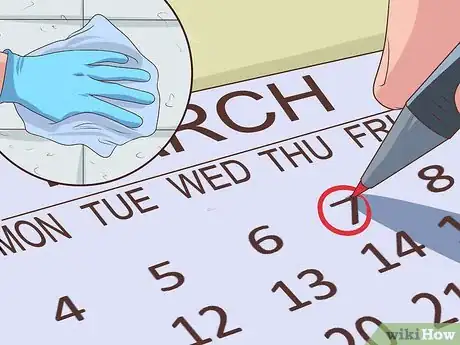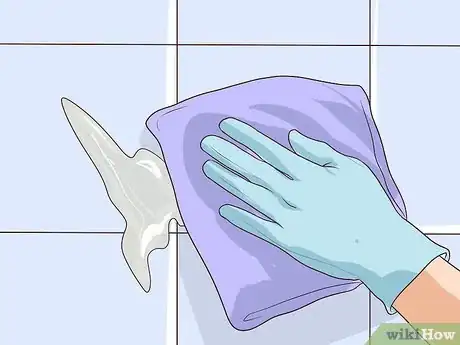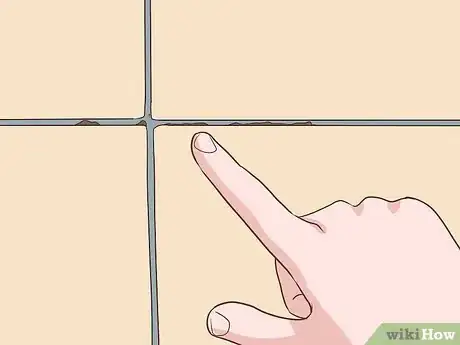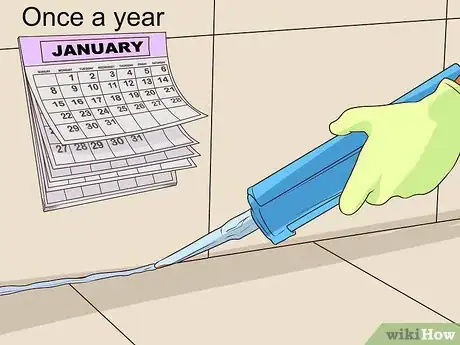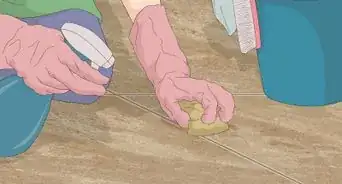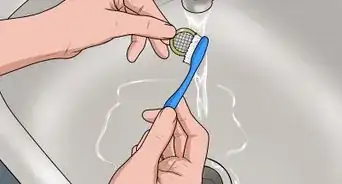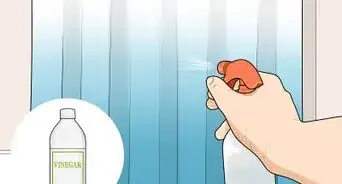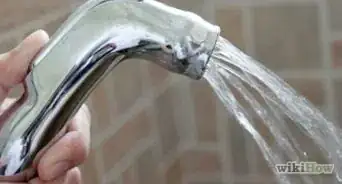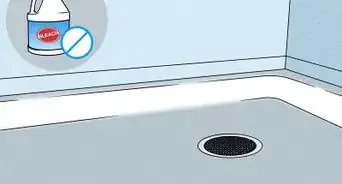This article was co-authored by Michelle Driscoll, MPH. Michelle Driscoll is the Owner of Mulberry Maids, which is based in Fort Collins, Colorado. With five years of experience, her business specializes in cleaning homes and small offices. She holds a Masters in Public Health from the Colorado School of Public Health. Additionally, Mulberry Maids has an A+ rating from the Better Business Bureau.
This article has been viewed 71,801 times.
You may be a huge fan of your travertine shower’s stunning looks and durability, but how do you get rid of the soap scum and mineral deposits? Travertine’s texture comes from the small pores in the stone, which can make cleaning it challenging. However, it’s not nearly as difficult to care for as it may seem. In this article, we’ll walk you through the steps when it comes to routine and deep cleanings alike so that you can keep your shower looking pristine!
Steps
Doing Routine Cleaning
-
1Clean your shower after you use it. The running water in your shower loosens surface dirt and softens soap residue on your travertine tiles.[1] For optimal results, tackle shower cleaning after your shower has primed the tiles for you.
-
2Spray your wet tiles with a non-acidic soap scum remover. Travertine, like all limestones, is extremely sensitive to acids.[2] Use a non-acidic stone cleaner, such as Granite Gold Shower Cleaner or MB-3, and spray the travertine thoroughly from the top to the bottom. Let the cleaner sit on the stone for 10 minutes to begin dissolving any soap scum.
- Given travertine’s acid sensitivity, always avoid applying vinegars or other citrus cleaners.
Advertisement -
3Use warm water to scrub the tiles. Fill a bucket with warm water, and begin scrubbing the tiles with it. Use a diamond-shaped brush to wash the entire top row of tiles, applying firm pressure to loosen soap scum.[3] Progress to the next highest row, methodically working your way to the bottom row.[4] This way, dirty water will run down on tiles you’ve yet to clean.
- Focus particular attention on any surface holes in the travertine when cleaning, as they can collect soap scum.
- A diamond-shaped brush makes it easy to clean your shower’s innermost corners easily, but any shape is fine.
-
4Use a soft toothbrush to scrub grout. Spray your grout with the non-acidic cleaner you used on the tile, and scrub each grout line back and forth with an old toothbrush.[5] Focus your scrubbing on areas of mildew growth and discoloration.
- Many grout formulas contain acids and should not be used with travertine.
- If possible, use a toothbrush with softer bristles, as hard-bristled toothbrushes may etch the surface of the stone.
-
5Remove hard water stains with fine steel wool. Be sure to choose 0000-grade steel wool, as it is very fine and shouldn’t scratch the tiles. Lightly buff away hard water stains with the steel wool.
-
6Rinse the shower with warm water. Turn the shower on and rinse your newly cleaned travertine tiles with warm water. If there are any spots you can’t reach with the showerhead, fill your bucket up with clean water and rinse the tiles clean manually.
-
7Dry your travertine with a clean towel. Use a towel to wipe down your travertine to remove any traces of stone cleaner. It may be helpful to open a window to dry the area more quickly.
Protecting Your Travertine
-
1Squeegee and wipe down your travertine after showering. Use a squeegee to remove excess water from the tile after showering. Then, use a towel to wipe your travertine dry to keep soap scum from building up over time. Plus, it’s easier to remove soap residue before it dries.
- Pay special attention to pools of water in corners and around edges.
- If you have a glass shower door, leave it open after showering to allow the water to dry.
-
2Establish a regular cleaning routine. Soap scum can cause hard water deposits to accumulate on your travertine. To keep your shower looking its best, clean your travertine shower with non-acidic cleaner a once a week.
- If you have a detachable shower head, use it to rinse the tile with warm water after showering to remove soap scum.
- Creating a calendar reminder can help you remember to incorporate cleaning your shower into your household routine.
-
3Clean travertine as soon as something spills. Whether it’s a colored shower gel or shampoo tinted to enhance hair color, when something spills on your travertine, clean it up right away. Certain bath products contain dyes, which can permanently stain your stone.
-
4Inspect grout and tiles for damage. Bits of grout breaking off can scratch your travertine and trap dirt and grime. Cleaning is a great time to get up close and personal with your tile. Examine your grout and stone for cracks or chips. Be sure to replace chipped or broken tiles and have your grout touched up wherever necessary.
-
5Get your travertine sealed once a year. Sealing your travertine makes the stone more resistant to damage from soap, grit and hard water. Have a stone professional seal your travertine once a year to keep it looking and functioning great.
Things You'll Need
- Non-acidic shower cleaner
- Diamond-shaped shower brush
- Toothbrush
- Water
- Towel
- Travertine sealant
Warnings
- Avoid using acid cleaners on Travertine.⧼thumbs_response⧽
References
- ↑ http://www.bhg.com/homekeeping/house-cleaning/tips/how-to-clean-a-shower/
- ↑ https://www.gsa.gov/portal/content/111930
- ↑ http://www.bhg.com/homekeeping/house-cleaning/tips/how-to-clean-a-shower/
- ↑ http://cleanmyspace.com/the-secrets-to-maintaining-high-end-finishes-in-your-home/
- ↑ http://www.stylemepretty.com/living/2010/04/13/how-to-clean-grout/
About This Article
To keep your travertine shower clean, spray a non-acidic stone cleaner onto the travertine after you've finished showering, because the water will have already loosened the soap scum. After the cleaner has been on for 10 minutes, start scrubbing the tiles with a brush and warm water. For the grout, use an old toothbrush to scrub between the tiles. To finish, remove any hard water stains by using fine steel wool, then rinse your clean tiles with warm water from the shower head. To learn how to protect your travertine, including why you should clean up shampoo spills immediately, read on!

